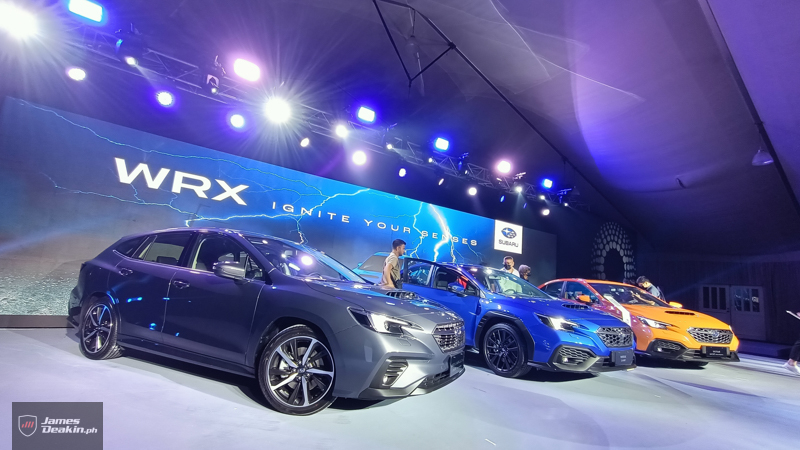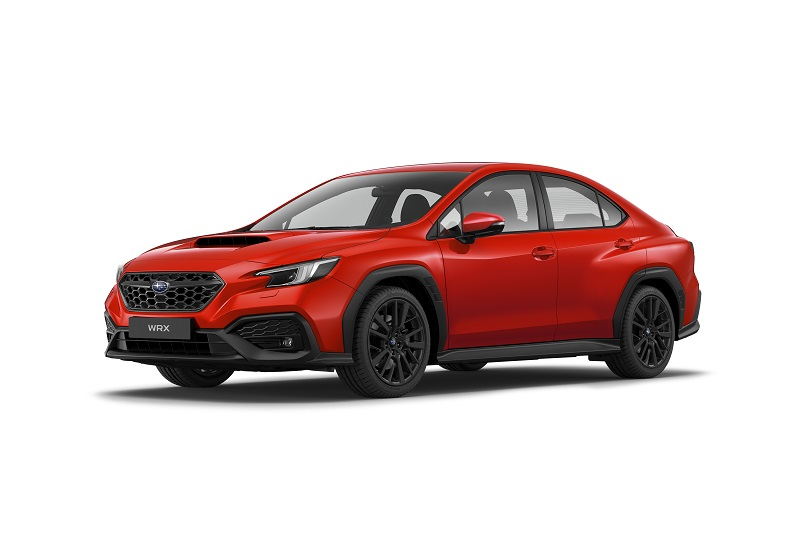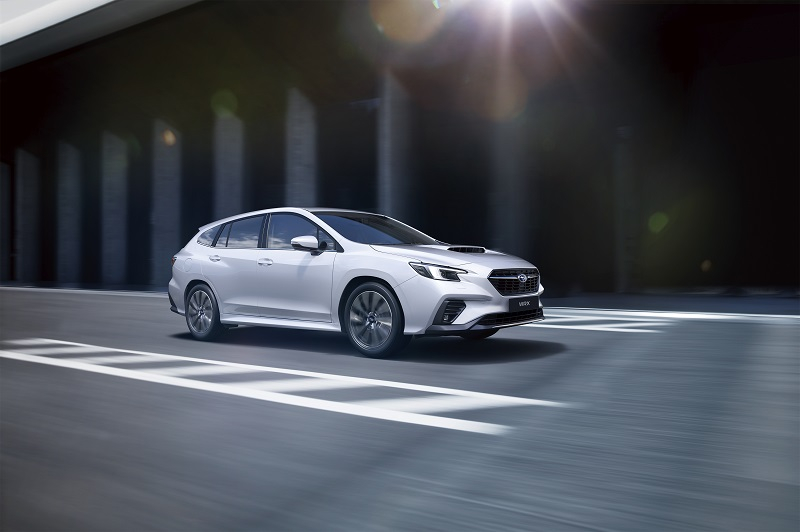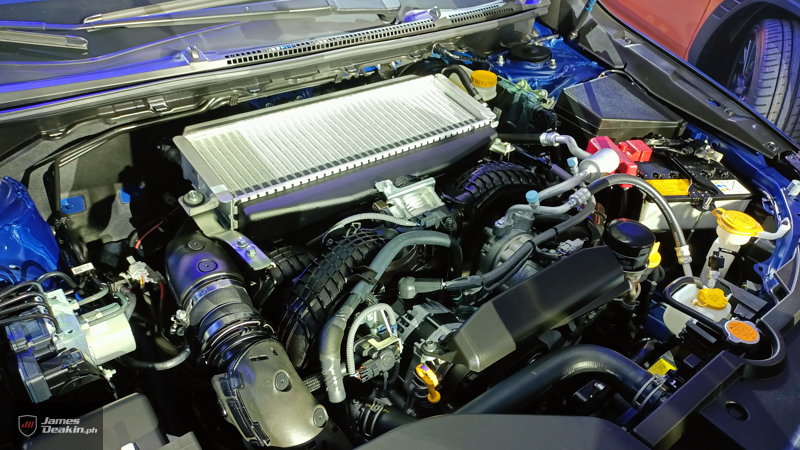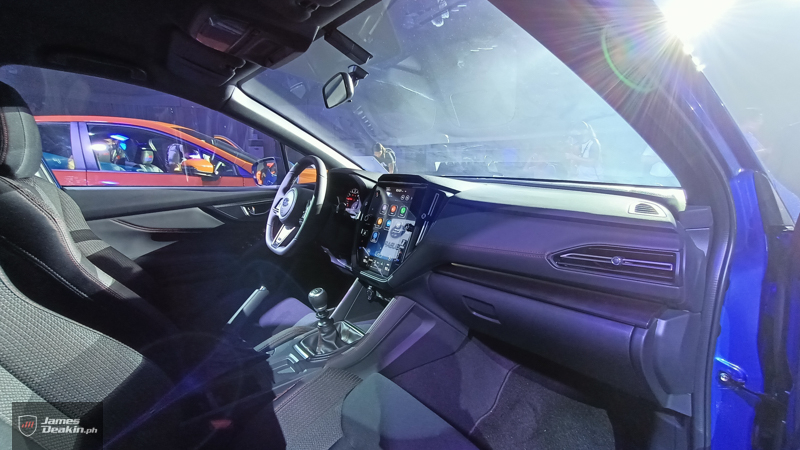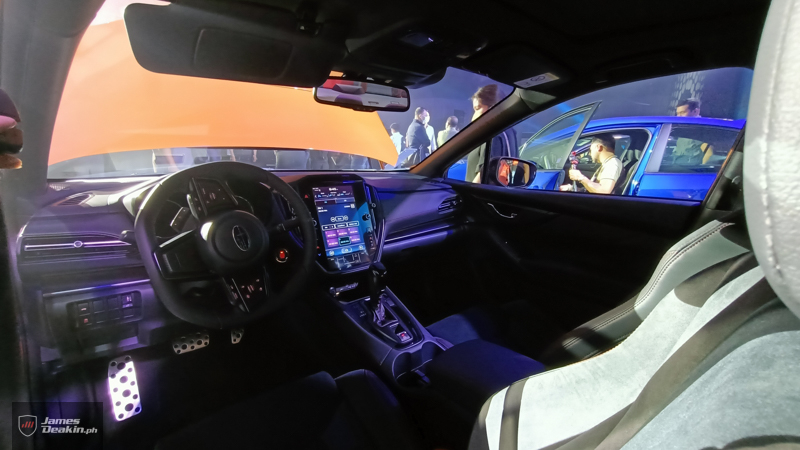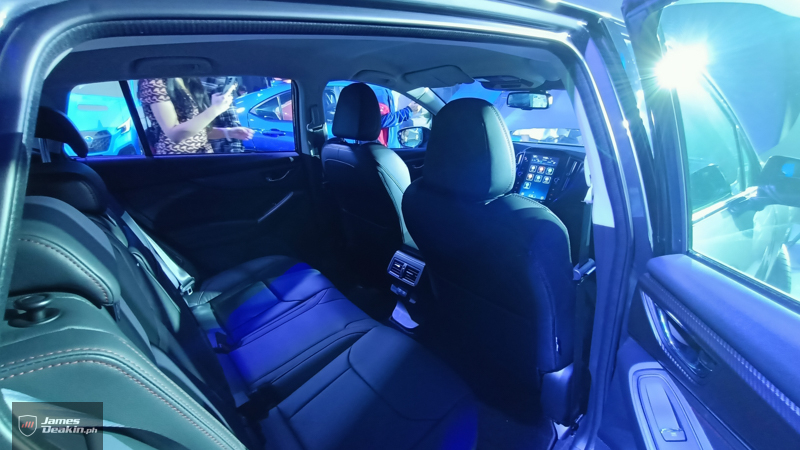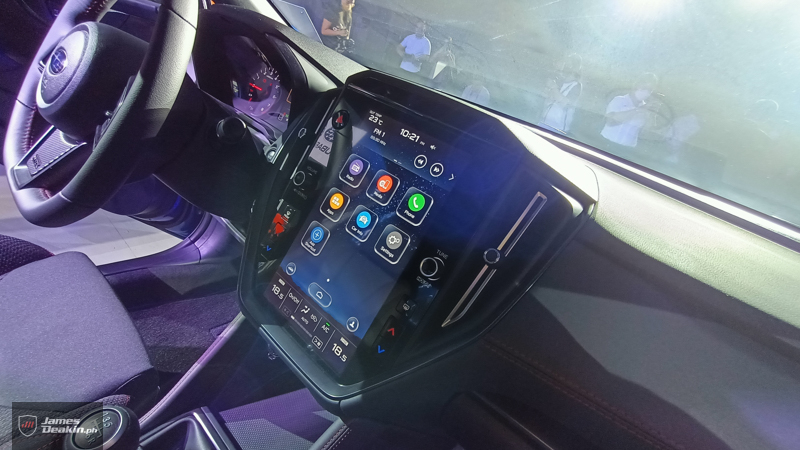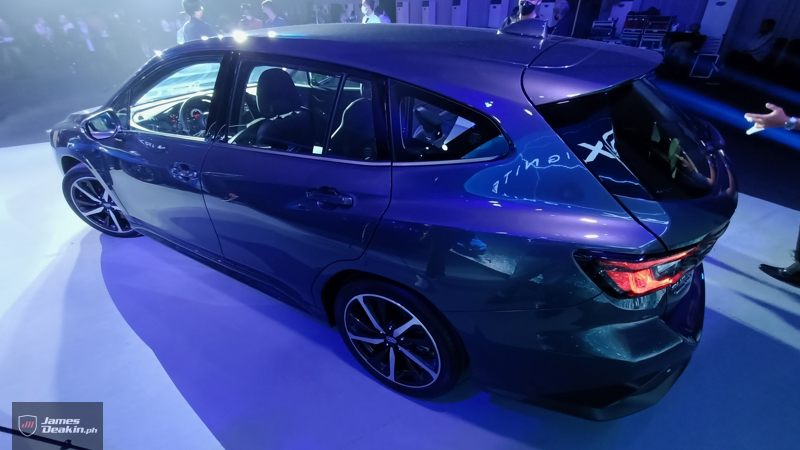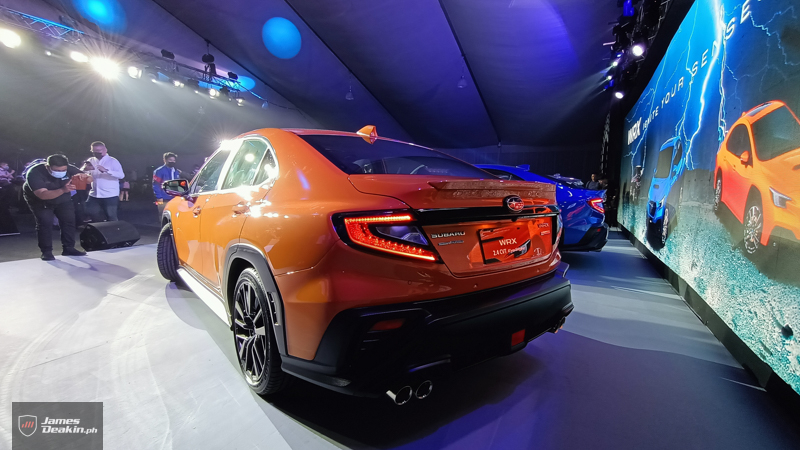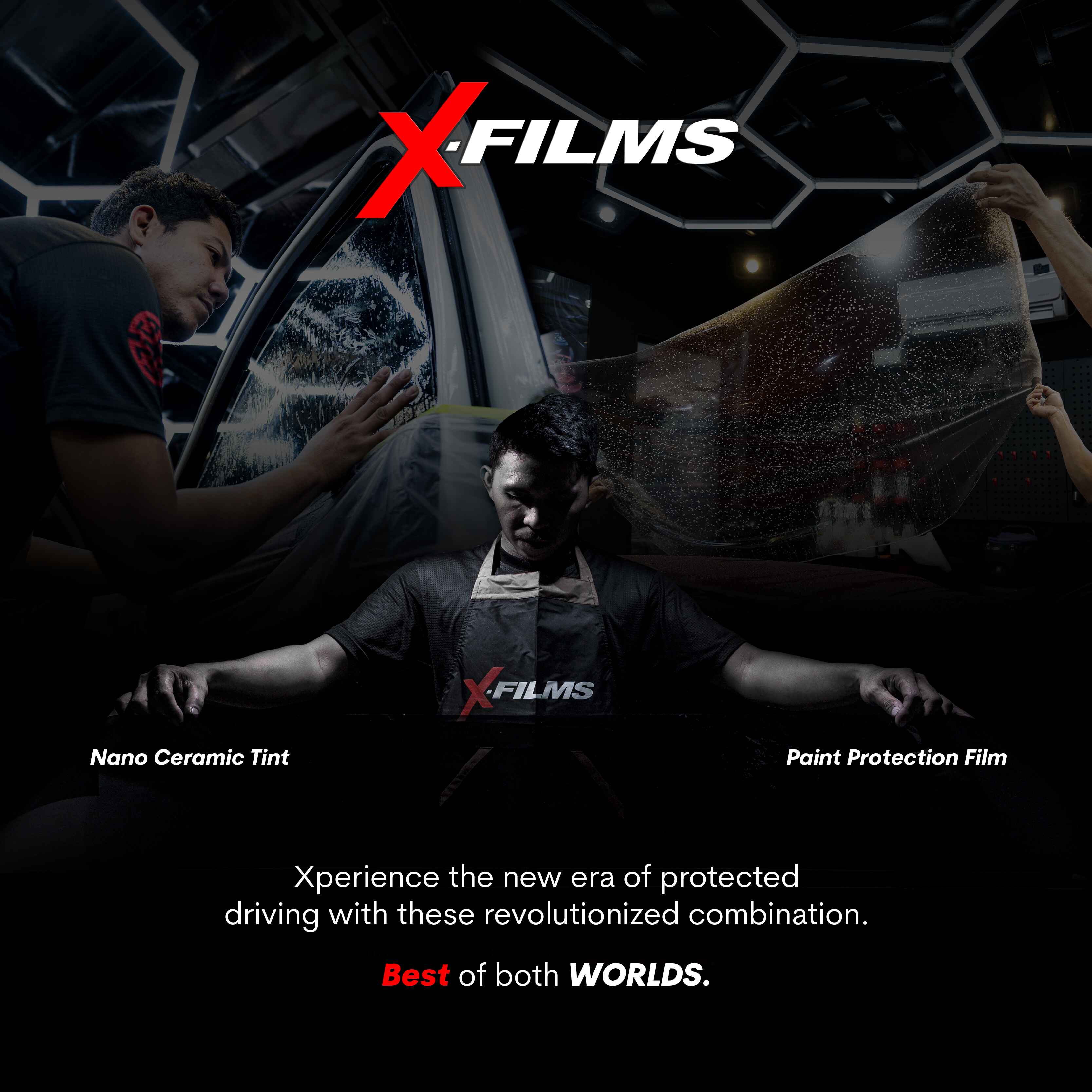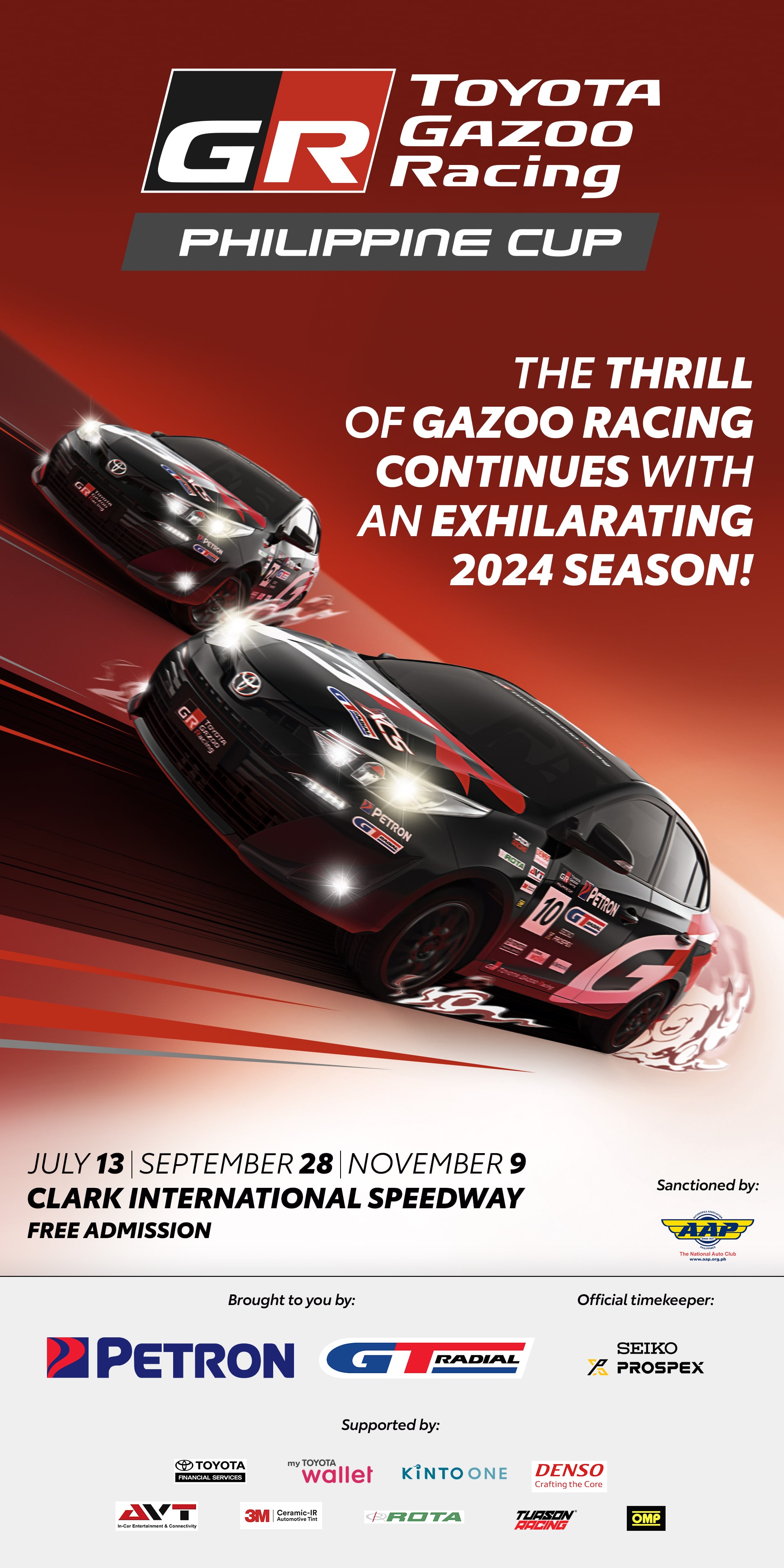WRX EXTERIOR
The Shape
Subaru’s modern design philosophy “Dynamic x Solid” has been enhanced to also express “Bolder”, guiding the complete redesign of the WRX in both notchback-sedan and station-wagon bodystyles.
Compared to its predecessor, the new WRX is 75 mm longer, 30 mm wider and 10 mm lower than before, with an additional 25 mm in the wheelbase (2675 mm). The new WRX Wagon is 65 mm longer, 15 mm wider and 10 mm taller than the previous Levorg, with an additional 20 mm in the wheelbase (2670 mm).
Both models are built on the newest iteration of the Subaru Global Platform, with full inner frame construction and expanded application of structural adhesive to greatly improve the car’s rigidity, a bedrock of performance driving capability. According to Subaru’s internal studies, the torsional stiffness of the chassis is up by 28 percent for the new WRX and 44 percent for the new WRX Wagon.
Furthermore, the proportion of high-tensile steel sheets in the body has been increased from 4 percent to 9 percent (approximate in-house data), which is good for collision safety. The bonnet is still aluminium, like the older WRX, while the front fenders are now also made from the light yet strong metal, saving 2.3 kg.
The Style
The styling of the new WRX and WRX Wagon was previewed by a pair of stunning Subaru concept cars – the Viziv Performance Concept at the 2017 Tokyo Motor Show and the Viziv Tourer Concept at the 2018 Geneva International Motor Show. Not only that, key design elements of the two related prototypes actually made it to production.
For instance, the Viziv Performance Concept’s “forward-thrusting body with low centre of gravity”, “dynamic flare of the muscular fenders” and “bold glimpse of the exhaust in the rear bumper” have been productionised on the street-legal WRX. The front has been designed to give the impression of overwhelming performance at a glance. The striking hexagonal grille, with its honeycomb pattern repeated neatly above the fog lamps, is flanked by sleek LED headlamps with Subaru’s C-shaped light signature. Of course, the classic WRX trademark, a functional scoop cut into the hood, is present and accounted for, feeding fresh air to the intercooler of the turbocharged boxer engine.
The athletic design of the WRX continues on the bodysides, which are dominated by eye-catching fender extensions to visually convey the all-wheel-drive power and blacked-out lower sections to accentuate the road-hugging stance. Following the sports theme perfectly are the 18-inch aluminium-alloy wheels with 245/40 R18 high-performance tyres.
If the nose of the WRX looks fast, then the tail looks downright furious. Just like before, there are two pairs of exhaust tailpipes with a fog lamp in the middle, but the rear bumper has become an imposing structure that seems to brace the sculptured sheet metal above and alongside.
The boot-lid spoiler, trunk garnish that cuts across like a black katana blade, and LED combination lamps with their magma-inspired lighting effects complete the look of the WRX’s “Tokyo turbojet” rear. Even though the WRX and WRX Wagon are cut from the same Japanese cloth, the two cars clearly differ in their design direction.
The WRX pays stylistic tribute to rallying in an obvious fashion, especially in its flashy special colour Solar Orange, whereas the WRX Wagon is styled as a classy sports tourer, available with a choice of chic white paintwork, either Ceramic White (both bodystyles) or Crystal White Pearl (wagon only).
